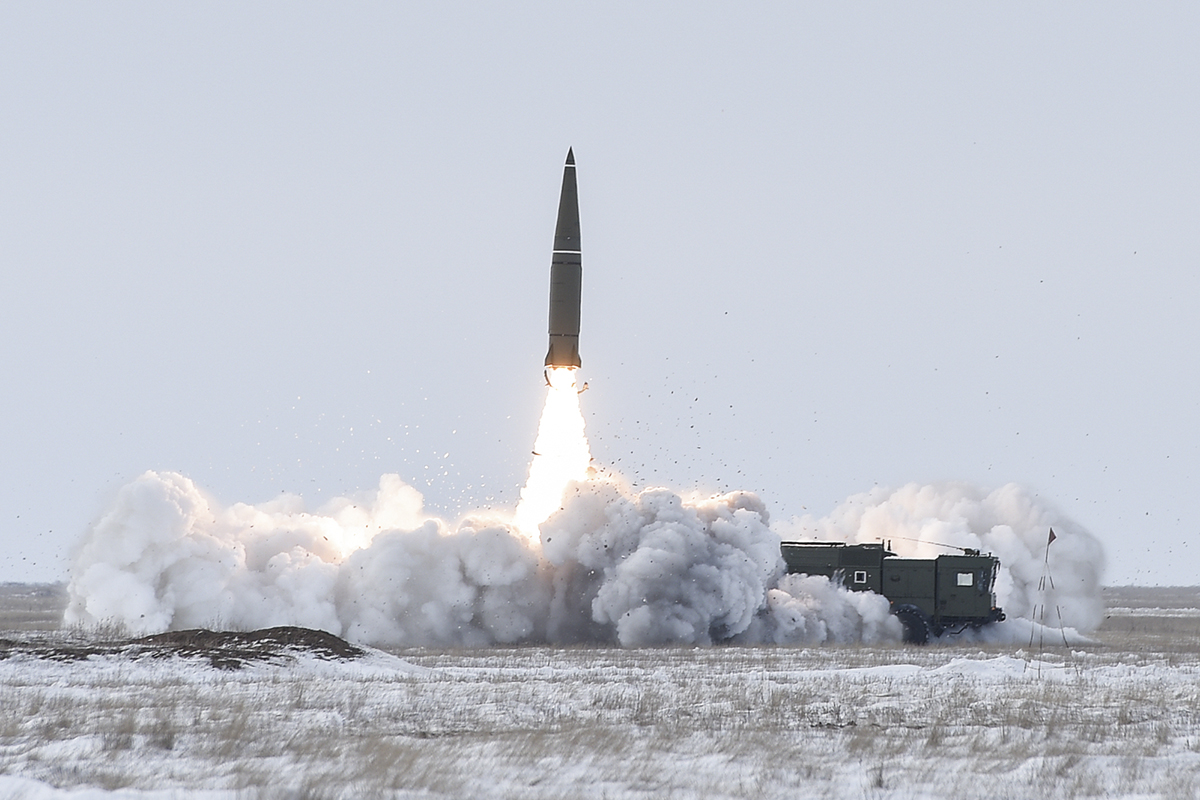Russia has reportedly been destroying NATO-supplied radars in Ukraine by luring them with Iskander and Kalibr missiles and then firing anti-radiation missiles (ARM) after they ‘light up,’ presenting themselves as targets.
The claims were made on Telegram that discussed the war from the Ukrainian perspective, later picked up by Russian defense enthusiasts.
“The Armed Forces of Ukraine (AFU) are forbidden from using air defense systems during a missile and drone raid. It is allowed to use them only in the event of a mass attack by Russian aircraft,” said a comment on one such online forum.
The report claims that following the Kalibr and Iskander missile strikes, the Russian Aerospace Forces launch long-range Kh-31PD anti-radar missiles. To shoot them down, NATO air defense systems go active, allowing themselves to be targeted by the Kh-31PD.
The Kh-31 is likely to be fired from the Su-35S fighter. Lastly, the post on the message board says that Ukraine has been asked to turn off the radars of the SAM systems from NATO countries and use them only during mass Russian air strikes.
Likely Russian Disinformation?
Retired IAF Jaguar pilot Vijainder K Thakur did not rule out such a Russian tactic, saying it was “credible and logical” but also warned of the possibility of it being “likely exaggerated.”
Countries like Russia often employ heavy information warfare to affect the morale of adversary forces and populations. In this case, such claims might be aimed at embarrassing US and NATO, who have been arming Ukraine.
Thakur based his assessment on the fact that the Kh-31 can only be used in eastern Ukraine as it has a limited range, keeping Ukrainian cities like Kyiv out of its reach.
“Otherwise, the Russian Air Force (VVS) would have to fly closer into Ukrainian airspace and risk being targeted by the western air defense systems Ukraine is using,” Thakur added.
Another reason to doubt the claim is that there have not been more than two to three Russian Iskander missile strikes in November, based on the daily updates by its Ministry of Defense (MoD). Assuming the claims are untrue, this is also not the first time Russia has baited Ukrainian targets into revealing its position.

Lastly, Russia would have publicized the destruction of any major western air defense (AD) system, like it declared destroying dozens of other US platforms like the High Mobility Artillery Rocket System (HIMARS) or the M-777 lightweight towed howitzer.
The 9K729 Iskander is a road-mobile short-range surface-to-surface ballistic missile used extensively for tactical battlefield strikes by Russia. The 3M-54 Kalibr, meanwhile, are ship and submarine-launched cruise missiles that can be used for both land-attack and anti-ship roles.
Bait & Hit!
Assuming the claim is valid, this would not be the first time Russia would be baiting air defense (AD) systems in Ukraine with decoys.
In a separate analysis in the EurAsian Times earlier, Thakur, while disproving the British intelligence report about the use of the Kh-55 Strategic Missile, said that it was likely Russia was using Kh-55 SM with inert warheads as decoys. Ukrainian AD radars turned on to engage them to reveal their positions to Su-35S fighters, which would launch Kh-31 ARMs.
Ukraine uses the US-origin National Advanced Surface-to-Air-Missile Systems (NASAMS), the MIM-23 HAWK, and the German-made IRIS-T SAM platforms. Their deployment possibly has been in Ukrainian cities facing the brunt of Russian cruise missile and Geran drone strikes. Ukraine also uses Soviet-origin S-300 and the 9K317M Buk-M3 system.
The Kh-31A (Active) is a variant of an anti-shipping cruise missile (ASCM) that uses inertial guidance to find its target area. The missile can engage ships displacing up to 4,500 tons. The Kh-31P is an anti-radiation missile (ARM) version specifically developed to take out active (radiating) adversary radars.
https://youtu.be/TSuoQzKn1SI
It is designed to take down air operations control radars, early warning radars, and medium- and long-range SAM systems.
In 2001, India was reported to have bought Kh-31s for its Su-30MKI, including 60 Kh-31A and 90 Kh-31P. In July 2019, Sputnik News reported that India procured additional Kh-31 missiles.
Strikes To Coerce & Demoralize
Ukraine’s electricity grid was nearly destroyed by Russian missile and drone strikes in late October in retaliation to Ukraine’s attack on the Antonovsky Bridge. Large parts of Kyiv have been under total darkness after Russia announced “striking Ukraine’s energy infrastructure.”
This has been assessed to be a midway between not targeting the civilian population in a way that would cause mass non-military casualties yet responding to what it describes as Ukraine’s “terrorist tactics” in the war.
The destruction of power systems is also expected to impact the morale of the Ukrainian population, which might pressure President Volodymyr Zelensky into resisting US pressure and agreeing to Russian terms.
- The author can be reached at satamp@gmail.com
- Follow EurAsian Times on Google News